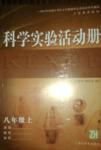题目内容
Parents are often amazed at how fast their child grows and develops. New research has determined that the ability to quantify may develop much sooner than most parents realize.
Kristy vanMarle, professor of the University of Missouri, has determined that contrary to what previous studies have shown, infants(婴儿)are able to quantify substances(物质)—like sand or water—as early as 10 months. As long as the difference between the two substances is large enough, infants will choose the larger amount, especially when it comes to food.
With the assistance of her team researchers, vanMarle tested the quantifying skills of babies by presenting them with two cups: one containing a small amount of food, and one containing a larger amount. Consistently, the babies chose the larger amount.
“Several studies throughout the last 15 years have shown that infants are very good at telling how many objects they see; however, infants don’t seem to count things like water or sand,” vanMarle said. “What we’re saying is that they can quantify substances; The infants can see how much food goes into each cup and compare that in their memories. They decide which amount is larger, and they almost always select the larger one.”
This information further refutes(驳斥)the long-held idea that babies “know nothing of the world,” vanMarle said.
“Since psychologists have begun studying infants with sensitive measures, we’ve discovered a lot of early abilities. I think for parents, it should be exciting to know that there’s somebody there that has some fundamental and basic knowledge of the world, and that knowledge is guiding their development,” vanMarle said.
In the future, vanMarle says this kind of study could be linked to a child’s progress in math-related skills, although programs marketed to increase those abilities, such as “Baby Einstein,” still have mixed reviews when it comes to academic study.
1.Babies choose the larger amount of food .
A.by saying numbers B.with the help of parents
C.on personal preference D.through their natural abilities
2.The quantifying ability refers to the ability to .
A.choose between different substances
B.get much knowledge of the world
C.describe the quantity of something
D.obtain math-related skills
3.What is mainly talked about in Paragraph 4?
A.The process of doing research.
B.The scientific findings.
C.The final choice of infants.
D.The observation of infants’ behavior.
4.We can learn from the text that .
A.some parents don’t care about their kids
B.people used to think the world is known to babies
C.little research has been done on infants
D.scholars disagree on baby-training programs
5.What’s the best title of the text?
A.Breakthrough in Baby Studies
B.Amazing Baby-training Ideas
C.Early Human Abilities
D.Unique Quantifying Methods
1.D
2.C
3.B
4.D
5.A
【解析】
试题分析:新的研究发现婴儿具有很强的数量概念,他们几乎总是本能地选择数量较多的物体,尤其在食物方面,这种突破性科学发现有力地驳斥了长期以来认为婴儿对世界一无所知的观点。
1.推理判断题。文章倒数第二段提到婴儿具有认知世界的一些基本知识.由此可推断他们选择数量比较多的食物是本能的体现。选D
2.推理判断题。由文章内容可知,婴儿几乎总是挑选数量多的物体,由此可推断这种能力指的是区分物体数量的能力。选C
3.段落大意题。第四段介绍的是耗时15 年的几个研究的科学发现,故选B 项。
4.细节理解题。根据最后一段后半部分中的内容可知学者们就婴儿培训计划存在分歧。选D
5.标题概括题。新的研究发现婴儿具有数量意识,从而驳斥了长期以来认为他们对世界一无所知的观点,显然是婴儿研究方面的突破。选A
考点:考查科普类短文
点评:文章比较抽象,但题目并不难,集中考查了细节题,题目设置较为合理,涵盖了全篇文章内容,在做题的时候,准确确定考点,准确判断就行。

 科学实验活动册系列答案
科学实验活动册系列答案
| |||||||||||||||||||||||||||||||||||||||||||||||||||||||||||